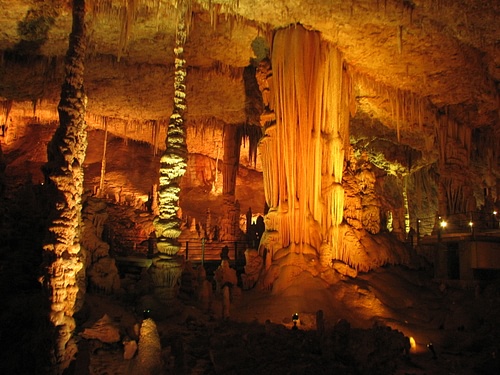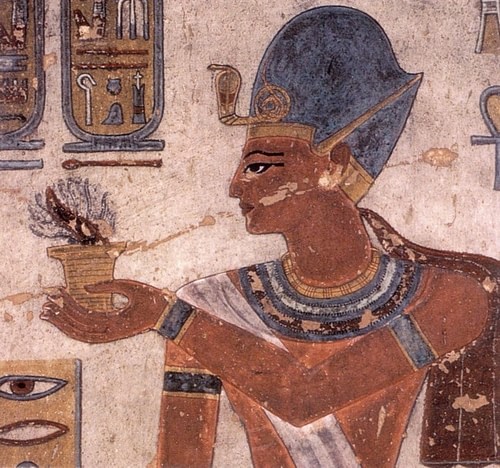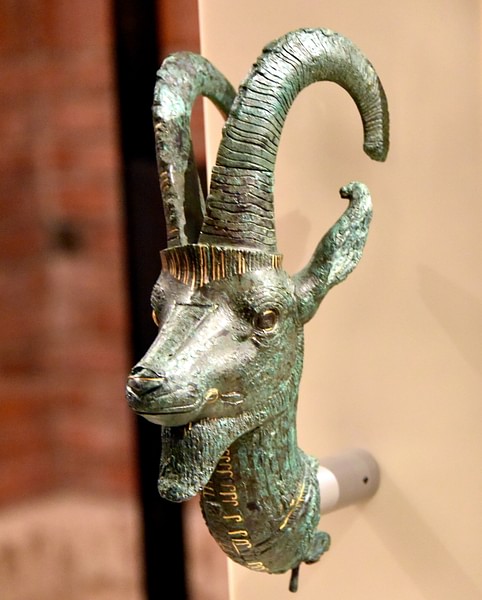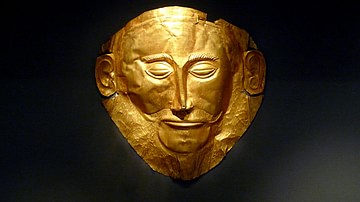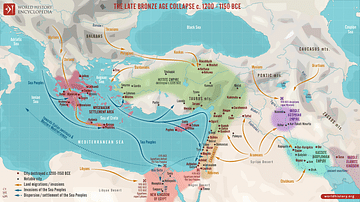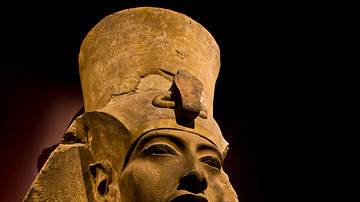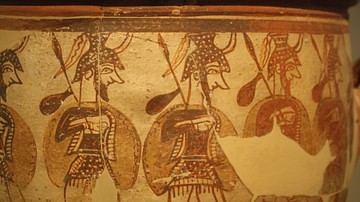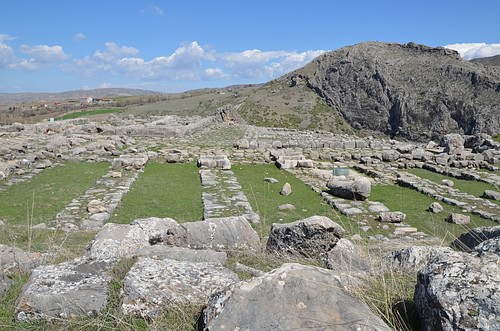
The Bronze Age Collapse (also known as Late Bronze Age Collapse) is a modern-day term referring to the decline and fall of major Mediterranean civilizations during the 13th-12th centuries BCE. The precise cause of the Bronze Age Collapse has been debated by scholars for over a century as well as the date it probably began and when it ended but no consensus has been reached. What is clearly known is that, between c. 1250 - c. 1150 BCE, major cities were destroyed, whole civilizations fell, diplomatic and trade relations were severed, writing systems vanished, and there was widespread devastation and death on a scale never experienced before.
The primary causes advanced for the Bronze Age Collapse are:
- Natural Catastrophes (earthquakes)
- Climate Change (which caused drought and famine)
- Internal Rebellions (class wars)
- Invasions (primarily by the Sea Peoples)
- Disruption of Trade Relations/Systems Collapse (political instability)
When the collapse had run its course, the Mediterranean region entered a “dark age” in which iron replaced bronze as the metal of choice, diplomatic and trade relations were nearly non-existent, and art, architecture, and general quality of life all suffered in comparison with the Bronze Age.
What followed the Bronze Age (c. 3300 - c. 1200 BCE) was the Iron Age (c. 1200-550 BCE) which was a period of transformation and development and, overall, not nearly as “dark” as 19th- and early 20th-century CE scholars believed. The Iron Age seems to only have appeared so to these writers when contrasted with the grandeur and prosperity of the Bronze Age, but, even so, while civilizations rebuilt and developed going forwards, much was lost which could not be replicated and the lessons of the Bronze Age Collapse for the present day are especially pertinent at the moment when the globally-linked world most closely resembles the intricate network of nations which characterized this era.
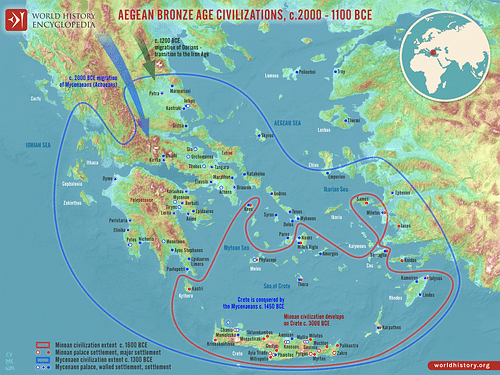
The Bronze Age
The Bronze Age is so-called because of the popularity of the use of bronze in metallurgy and is a convenient designation for the period. This era saw the development of civilization in every region of the Mediterranean and in every aspect. The Bronze Age is the period best known for its advances in culture, language, technology, religion, art, architecture, politics, warfare, and trade.
The Bronze Age is what most people think of when they hear the term “ancient history” because it was during this time that the Pyramids of Giza were constructed (during the Old Kingdom of Egypt c. 2613-2181 BCE) and the Temple of Karnak was built (starting in the Middle Kingdom, 2040-1782 BCE, through the New Kingdom, c. 1570 - c. 1069 BCE). In Mesopotamia, The Uruk Period (c. 4100-2900 BCE) saw the invention of the wheel and writing, among other advances, and this era merges into the so-called Early Dynastic Period (c. 2900-2334 BCE) and then the Akkadian Period (2334-2218 BCE) during which the first multicultural political entity in the world – the Akkadian Empire – was founded by Sargon of Akkad (r. 2334-2279 BCE). Babylon would later become the great center of culture and learning in Mesopotamia and Elam was raising grand cities.

The Hatti established themselves in Anatolia (c. 2700-2400 BCE) and built their great city of Hattusa (c. 2500 BCE). The Hittite Empire (1400-1200 BCE) flourished and the Kingdom of Mittani stretched from northern Iraq down to the region of Turkey. The Cypriot culture developed on Cyprus, The Phoenician city of Ugarit in the Levant, among others, prospered, and the Mycenaean Civilization of Greece (c. 1600 - c. 1100 BCE) was at its height.
As each political entity became more stable and centralized, trade flourished until, by around 1350 BCE, Assyria, Babylonia, Egypt, the Hittite Empire, and the Kingdom of Mittani were closely tied to one another in a network of trade and diplomacy referred to by modern-day scholars as the “Club of Great Powers” (Ancient Egypt, van de Mieroop, 188). This was a close-knit, international, web of relationships between the most powerful monarchs of the age and its existence is well-established through the Amarna Letters of the 14th century BCE, correspondence between the kings of Egypt and other nations.
These cordial relationships meant prosperity for the people of the lands involved. Trade flourished, as evident in the grand building projects of the New Kingdom of Egypt among other evidence, and each nation prospered through the ties of trade and diplomacy. This entire way of life would drastically alter for the worse beginning in the mid-to-late 13th century BCE, and this is the so-called Bronze Age Collapse. When it was over, of the nations which made up the Club of Great Powers, only Egypt would remain intact and then in a greatly reduced form.
Causes of Collapse
From the time of the French Egyptologist Gaston Maspero (l. 1846-1916 CE, who first coined the term “Sea Peoples” in reference to the invading forces of the 13th and 12th centuries BCE in 1881 CE), the causes of the Bronze Age Collapse have been presented by scholars as linear, happening in a set sequence: earthquakes brought down cities and poor harvests (climate change) caused famine which led to social and political instability resulting in internal rebellions while, at the same time, large populations uprooted from their own lands by the same difficulties migrated to the Mediterranean and, in their quest for a new home, disrupted existing populations, and all of these pressures finally resulted in the loss of diplomatic and trade relations and the fall of civilization in the Mediterranean.
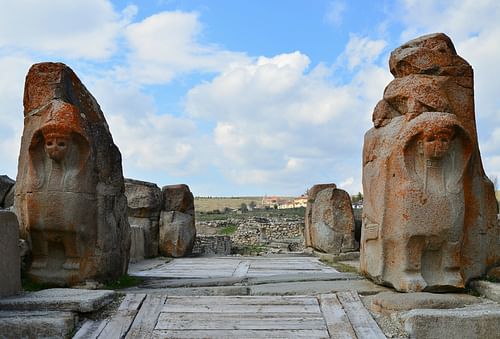
The problem with the linear concept of causes is not just that it is too simple – all of these civilizations had survived invasions and earthquakes and instability before – but because it always assumes a set date for when the collapse began and ended and then finds historical events which fit the narrative and support that date. It is far more probable, as advanced by scholars such as Eric H. Cline, A. Bernard Knapp and Stuart W. Manning, and Brandon L. Drake, among others, that all of these pressures were brought to bear on Mediterranean civilization in quick succession, perhaps almost simultaneously, so that they could not recover from one catastrophe before another was upon them. Cline refers to this phenomenon as “a perfect storm of calamities” and explains:
Perhaps the inhabitants could have survived one disaster, such as an earthquake or a drought, but they could not survive the combined effects of earthquake, drought, and invaders all occurring in rapid succession. A “domino effect” then ensued, in which the disintegration of one civilization led to the fall of others. (165)
This suggestion is most probable since, as noted, the Mediterranean civilizations had experienced most of these challenges in the past and survived. Cline avoids the pitfall of trying to date the precise year of the collapse by noting that his date of 1177 BCE is only a kind of “scholarly shorthand” for when the collapse began and should not be understood as a definitive date:
One might argue that 1177 BC is to the end of the Late Bronze Age as AD 476 is to the end of Rome and the western Roman Empire. That is to say, both are dates to which modern scholars can conveniently point as the end of a major era. Italy was invaded and Rome was sacked several times during the fifth century AD, including in AD 410 by Alaric and the Visigoths and in AD 455 by Gaiseric and the Vandals. There were also many other reasons why Rome fell, in addition to these attacks, and the story is much more complex, as any Roman historian will readily attest. However, it is convenient, and considered acceptable academic shorthand, to link the invasion of Odoacer and the Ostrogoths in AD 476 with the end of Rome's glory days. (172).
With that in mind, the causes of the Bronze Age Collapse must be considered as suggestions of probabilities as far as dates go, but a general time span is accepted (roughly c. 1250 - c. 1150 BCE) and certain aspects of the collapse during this period, such as climate change, assert themselves more profoundly because there is no record of such events, to such a degree, prior to this period of the collapse.
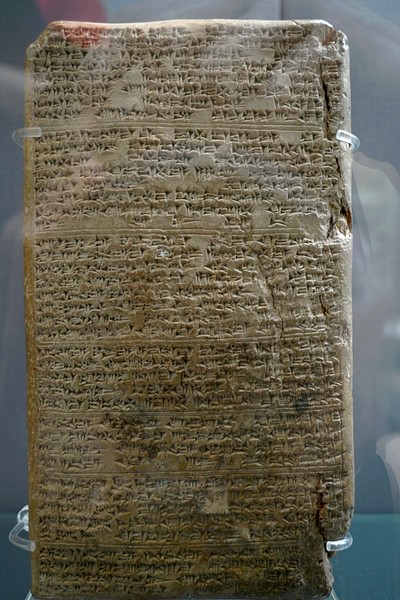
Natural Catastrophes: Knapp and Manning point out that earthquakes in the Mediterranean were commonplace this would have been no different in the 13th-12th centuries than previously. They cite scholar Robert Drews in their study who “presented a list of 47 sites in the region that had been destroyed over this 50-year period [of the collapse]” but maintain that it is hard to be certain which were destroyed by earthquakes and which by invasions or internal rebellion (113). Knapp and Manning also note the possibility of “earthquake storms” – a series of earthquakes in rapid succession – which might account for widespread destruction.
Climate Change: Archaeologist David Kaniewski cites climate change as the pivotal factor in the collapse, claiming “the abrupt climate change at the end of the Late Bronze Age caused region-wide crop failures, leading towards socio-economic crises and unsustainability” (Knapp & Manning, 103). This crisis, Kaniewski notes, would then have caused the mass migrations/invasions which were recorded by the people of Cyprus, Anatolia, and Egypt. The problem with this claim is chronology for the Bronze Age Collapse. There is, as noted, no set date for when it began or even how long it continued. Dates for the beginning of the Bronze Age Collapse range from 1250 to 1186 to 1177 BCE, among others, and so pinpointing a climatic change as a singular cause is not possible. Knapp and Manning make the point that “we lack any usefully defined climatic data from the eastern Mediterranean” for this period even though they acknowledge that climate change could have played a significant part in the collapse (117).
Scholar Brandon L. Drake, however, notes that “the Soreq cave in Israel contained a 150,000-year record of precipitation for the northern Levant” which shows an unprecedented and steady decline in rainfall ongoing through 1150 BCE by which time it was significant enough to have caused drought. Citing the work of Kaniewski and Harvey Weiss, Drake notes that a so-called mega-drought (Weiss' term) struck the region between c. 1200-850 BCE and this is evidenced through the examination of pollen and alluvial records as well as letters between monarchs at the time (Drake, 1863). Drake concludes:
A decline in Mediterranean Sea surface temperatures before 1190 BCE decreased annual freshwater flux by lowering evaporation rates. Westerly winds took in less water vapor, resulting in declining precipitation. (1868)
Declining precipitation led to drought which affected harvests and resulted in famine. Famine would have then driven migration/invasion.
Internal Rebellions: Class wars – defined as the lower classes revolting against the privilege of the elite – is cited as another cause. During the reign of Ramesses III (1186-1155 BCE), the first labor strike in history is recorded when payment to the tomb-builders at Deir-el-Medina was not delivered. Tomb robbing also became rampant at this time and scholar William H. Stiebing notes, “it is interesting that the item the thieves most often purchased with their loot was food” (227). Cline cites the destruction of the Canaanite city of Hazor as “caused by an internal rebellion of the city's inhabitants” who may have lacked adequate food supplies (148). The obvious suggestion of the archaeological and literary evidence is a food shortage which encouraged the lower classes to revolt against those perceived to be holding back resources.
Invasions: The Bronze Age Collapse was once attributed solely to the invasion of the so-called Sea Peoples between c. 1276-1178 BCE. The identity of this coalition is still debated in the present day but, whoever they were and wherever they came from, they wreaked havoc on the civilizations of the Mediterranean. The names of the tribes include the Sherden, the Sheklesh, the Lukka, the Tursha, the Akawasha, and the Peleset among others. Egyptian inscriptions from the New Kingdom make clear they were fought off by Ramesses II (Ramesses the Great, r. 1279-1213 BCE), his son – and successor – Merenptah (r. 1213-1203 BCE), and Ramesses III who defeated them in 1178 BCE. Invasions elsewhere, by others, have also been cited as a major cause. Stiebing notes Drews' theory for the invasions, especially of the Sea Peoples:
Robert Drews has proposed an interesting variation of the invasion explanation that sees changes in warfare as the reason for the end of the Bronze Age. According to this view, barbarians like the Sea Peoples who had long been employed as mercenaries by the Great Powers, abruptly turned on their masters. (229)
This theory is untenable, however, as it ignores the well-established records of the Egyptian monarchs – especially Ramesses III – which show the Sea Peoples arriving with their wives and children in carts; clearly indicating a migratory people following an invading force.
Disruption of Trade Relations/Systems Collapse: The severing of commercial and diplomatic ties has also been cited as a cause for the collapse but this cannot be posited as primary as there was no reason why the Great Powers would have suddenly decided to end relations and allow their cultures to devolve or their actual civilizations to end. The disruption of trade would have to be the culmination of earlier stressors. The global nature (recognizing what “global” would have meant to the people of the ancient Mediterranean) of trade at that time linked each nation to each so closely that, if one fell, the others would follow. Stiebing comments:
[Scholars] have argued that the Bronze Age civilizations experienced a systems collapse. Their economies were too narrowly based and their trade networks depended on relatively peaceful conditions. Also there were major social problems (such as debt slavery, alienation of land, abuse of peasants by the aristocracy) that caused internal discontent. Then, at the end of the thirteenth century, piracy and military conflicts disrupted trade. The substantial decline in trade, in turn, led to economic collapse, revolts, and general breakdown of the economic, political, and social systems. (230)
None of these causes, on their own, can explain the Bronze Age Collapse. Most scholars agree with the conclusion succinctly articulated by Marc van de Mieroop: “no single cause can explain what happened in all regions and states” (Near East, 190). One scenario which might fit one region does not work in another and the linear explanation of one cause leading to another ignores previous epochs in history where there were similar challenges but no collapse.
The Dark Ages
The Hittite Empire fell, Ugarit was destroyed, the Mycenaean Civilization vanished, the cities of the Levant followed a similar pattern of decline, and the Cypriots suffered as well. The golden age of the Club of Great Powers and the resultant prosperity became a memory, and this memory was recorded in myth, most notably in Greece in the 8th century BCE by Homer and Hesiod, both of whom remind a reader of a great age in the past, now long gone, which was far superior to the present.
Cline ends his book, 1177 BC: The Year Civilization Collapsed, on the optimistic note that, from the ashes of the Bronze Age Collapse, came the seeds of the civilizations which would produce the modern world. He suggests that “sometimes it takes a large-scale wildfire to help renew the ecosystem of an old-growth forest and allow it to thrive afresh” (176). This is no doubt true but, as he also notes, one is left to wonder what the modern world might be like if there had been no Bronze Age Collapse.
Enormous cultural gains were, obviously, made afterwards, and the “dark ages” which followed the collapse were nowhere near as dark as earlier scholars imagined. To cite only one example, Egypt's Third Intermediate Period (c. 1069-525 BCE), was well-known for its craftsmanship in metallurgy which worked “in gold and silver but the major part in bronze” (Shaw, 361). Bronze-work survived the collapse, as did many other aspects of Bronze Age civilization.
Even though some writing systems vanished – notably the Mycenaean and Minoan – the Phoenician alphabet came to take their place. Gradually, the people of the Mediterranean who survived the collapse adapted to their new reality and rebuilt their lives. Those lives were obviously quite different from how they would have been if there had been no collapse but, as the Greek philosopher Heraclitus observed, the essence of life is change and all things, at all times, undergo transformation – willingly or unwillingly – and so it was with civilizations of the Bronze Age.
Even so, the parallel between the period of the collapse and the modern-day seems quite striking in that now, as then, the world is intimately linked through global trade and diplomacy and the downfall of one nation is certain to affect the fortunes of every other. As Cline notes, “in a complex system such as our world today, [a tipping point] is all it might take for the overall system to become destabilized, leading to collapse” (176). That tipping point, modern science and empirical observation dictates, is climate change; the one factor among the causes of the Bronze Age Collapse which respected archaeologists and scholars feel was unprecedented at that time.
